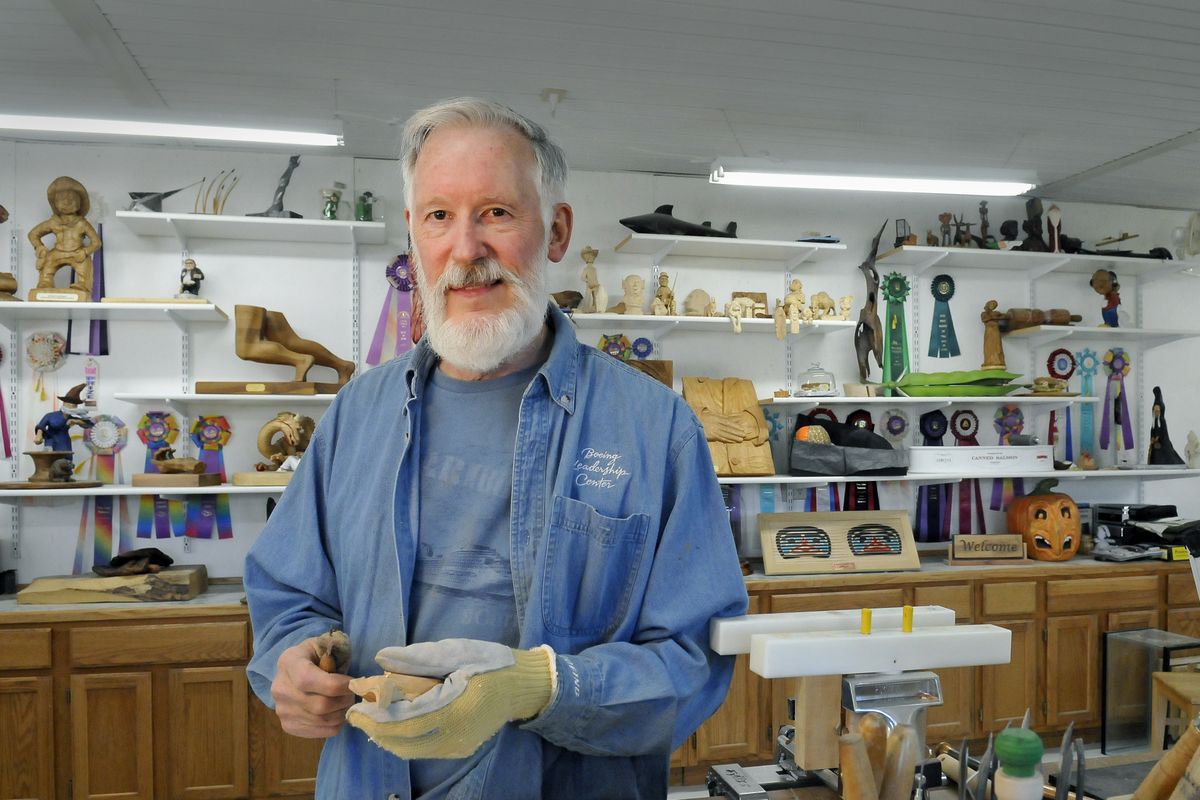Tim Rahman carves out solid niche of creativity

When it comes to finer details, master woodcarver Tim Rahman trusts a simple tool.
“It still comes back to this,” Rahman, 68, said holding a plain knife with a straight blade, and fine point at the end. “When I want to get around teeth or define the eyes, I need the pointy edge.”
With this knife and a variety of other tools, Rahman has applied his passion for fine detail and definition to bring realism, humor and movement to his art.
“I carve to capture the look,” Rahman said. “Not for ease of finish.”
One of his pieces was realistic enough to fool a show judge.
“He was the judge of judges,” Rahman said. “When you can fool someone like that, you’re doing something.”
At a woodcarver’s show in the late 1990s Rahman placed a life-size maple bar on the table to be judged. The maple bar is displayed on a plate carved of maple wood, with a bite carved out of one corner. He combined five colors of acrylic paint to mimic the color of a real maple bar.
“I used many models,” Rahman laughs. “I’m sure I gained some weight on that project.”
One judge walked by and asked the food be removed from the table. Removing it as the judge proceeded to view other entries, Rahman put it back shortly afterward. When the same judge walked by a second time, he insisted it be removed. Rahman then revealed his secret.
Rahman first tried carving wood at 16. Coming home from high school one day he found a magazine with simple patterns for carving four little dogs.
“I cut a chunk off one of my dad’s boards he was saving for a project on his boat,” Rahman said. “My mom loved those. She put them in her china cabinet and wouldn’t let me have them back.”
He didn’t carve anything again until his senior year at the University of Rochester in New York. That year he took a fine arts course to meet the graduation requirements for his electrical engineering degree. Rahman enjoyed the class, and decided to take another semester of sculpture. During the second semester, he began carving a pair of 18-inch legs out of wood. The legs – cut off at the thigh, and bare down to the toes – capture a person starting a race.
Unable to finish the project before graduation, he packed the piece away.
After moving to California and Seattle, Rahman accepted a job at Washington Water Power in 1970 and settled in Spokane. He and his wife bought the farm west of town in which he still lives in today.
In early ’90s Rahman attended a number of the Spokane Carvers Association annual Artistry in Wood Shows and got interested in carving. In 1995 he found the unfinished legs he started in college and decided to finish them. He entered the legs in that year’s show and won Best of Division for Novice.
“I was hooked,” said Rahman. He joined the Spokane Carvers Association soon following the show.
A member for more than 16 years, Rahman coordinates the club’s annual Artistry in Wood Show. This year’s show is Saturday and Sunday at Spokane Community College.
Rahman intends to enter his latest piece; an exact replica of his mother’s antique 1918 baby cradle. The carving features a patch work quilt carved from wood lining the interior. The quilt drapes over the outer edge, cascading down one side. The entire project took more than 200 hours to complete.
He estimates a typical project takes more than 100 hours to complete. One of his most challenging pieces is a large canned salmon. The salmon carved inside the can reflect traditional Native American art. The entire piece, including the can is carved from wood.
Another challenging piece includes a pair of life-size cowboy boots carved entirely of wood, and perfectly detailed down to the ivory looking spurs on the heels.
Having won more than 200 awards since 1995, Rahman has a list of more than 200 ideas written down. He looks forward to cooler weather when he has more time to carve.
“Winter is my prime season for carving,” said Rahman, who retired from WWP in 1999. “My wife gets busy in her quilt room. I’m out here (in his 24-by-36-foot studio) either designing or carving. We meet for meals.”